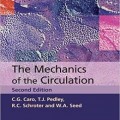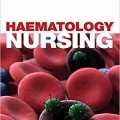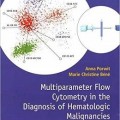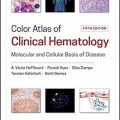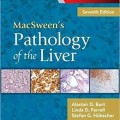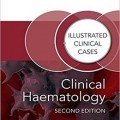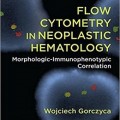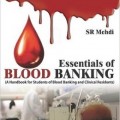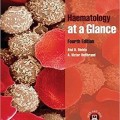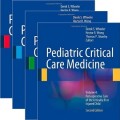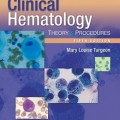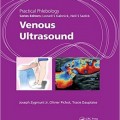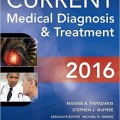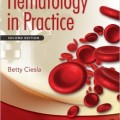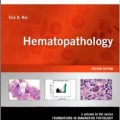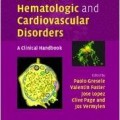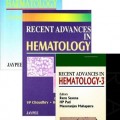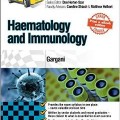دانلود کتاب مورفولوژی اختلالات خونی
Morphology of Blood Disorders, 2ed
Morphology of Blood Disorders, 2nd edition is an outstanding atlas with over 800 high-quality digital images, covering the whole spectrum of blood and bone marrow morphology, with particular emphasis on malignant haematology. Originally written in the Italian language by two world leaders in the field, the book has been expertly translated by the renowned haematologist and teacher, Barbara Bain.
This book explores the major topics of haematological pathology, blending classical teaching with up-to-date WHO classification and terminology. Each image in this book is derived from material obtained for diagnostic purposes from patients with serious haematological conditions. Morphological details are supplemented by detailed descriptions of the output and role of automated instruments in disorders of the blood.
Morphology of Blood Disorders, 2nd edition is an essential reference source for diagnosis in the haematology laboratory, designed to be the go-to guide for anyone with an interest in blood cell morphology.
Review
As stated in the Preface by Professor Barbara Bain: “This is a translation of the second edition of a textbook (published in Italian in 2013)… morphology of the blood and marrow remains fundamental in haematological disorders. The authors are renowned in this field”. The atlas is divided into 11 chapters; the first two are devoted to normal blood and bone marrow cells and erythropoiesis and the remaining chapters include succinct text and well-illustrated photomicrographs that follow very closely the 2008 WHO Classification of Tumours of Hematopoietic and Lymphoid Tissues. There are excellent histograms of red cells with two-dimensional cytograms with a fine discussion of the usefulness of the new index of aniscocytosis, the RDW. Following many of the chapters are reports of individual cases with cytograms using the Advia system. Many readers will not be familiar with the utility of such observations and can ignore as they wish. However, with over 800 very high quality digital images tochoose from, there is ample opportunity for learning, in detail, allof the nuances that are present in diagnostic hematopathology. The references are current through 2011, which is a surprising and pleasant feature. In summary this combined very current textbook and superb atlas should find a niche among hematologists, medical oncologistsand hematopathologists as an excellent teaching tool. (John M. Bennett, MD Department of Pathology, University of Rochester)
Blood morphology examination is a fundamental step in the diagnosis and monitoring of hematological diseases. Although a large number of on-line tools are available to both trainees and hematologist-oncologists, textbooks like “Morphology of Blood Disorders” still play a central and unique role in the training the new generation of blood professionals as well as in providing an authoritative and comprehensive reference tool. The two authors, Giuseppe D’Onofrio and Gina Zini, both from Catholic University of the Sacred Heart, Rome, Italy are recognized experts in the morphology of blood and bone marrow. They have teamed up with Prof. Barbara Bain, from Imperial College London, the foremost authority on morphology of blood elements, to produce an exceptionally well-illustrated and detailed textbook, covering both benign and malignant hematology. In many sections, blood morphology is accompanied by output data from hematology analyzers, providing an additional piece of the puzzle that most of the other textbooks on this matter have failed to adequately consider. Prof. Bain has captured the subtleties and nuances of the original Italian text and married them with an eloquent and incisive prose which beautifully describes both images and pathophysiology. A major strength of this textbook is the number and quality of the images as well as the detailed descriptions contained in the legends. I highly recommend “Morphology of Blood Disorders” for hematologists, hemopathologists and clinical laboratory professionals, both as a training instrument and a reference tool. (Carlo Brugnara)
This is a handsome publication by Zini and d’Onofrio two experts in their field. I have not seen the first edition so I don’t know how different from it the second edition is. The second edition is translated from the Italian by Professor Barbara Bain, a fluent Italian speaker. However translating from one language into another is not always easy but I think Professor Bain has been largely successful.
The book covers morphology of blood and bone marrow as stated on the cover. Chapter one contains a good general introduction to morphology and staining. The authors delineates the morphological changes seen in Anaemias, Acute Leukaemias, Myelodysplasia, Neoplasms of Mature B,T and NK cells and Plasma cell proliferative disorders. They also provide a detailed description of automated instruments used in haematology. Each section is accompanied by a short text. The book, as it should be, is heavily laden with images, most of which are of excellent quality. The authors frequently refer to the WHO Classification of Tumours of Haemopoietic and Lymphoid Tissues or the ‘Blue Book’ as it commonly known. Although there are more images in d’Onofrio and Zini’s book than the ‘Blue Book’ it is difficult to know if it will successful when the new edition of the ‘Blue Book’ comes out in 2015.
The authors do not specify at whom the book is aimed. The preface is very short and is written by the translator who says ‘Despite the enormous advances made in immunophenotyping and in cytogenetics and molecular aspects of haematology, morphology of the blood and marrow remains fundamental in haematological diagnosis’, a statement with which I totally agree.
I have a few minor quibbles. The authors mention ‘Wright’ and ‘Giemsa’ stains but do not tell us which stains have been used for the images. I think it would be better to put an arrow pointing to the cell the authors are describing rather than saying ‘clockwise from left’. Descriptions of morphology should be on the same page as the image, wherever possible e.g. description of lymphocytes on page 30 and photographs on page 36!
Fig 1.47. Surely ingested cells are erythrocytes and not erythroblasts.
More stress could be given to WBC changes caused by EDTA and growth factors.
In section on Erythropoiesis and Anaemia the word ‘physiopathology’ is used (p.94). pathophysiology is more frequently used!
A thorough explanation of RBC indices prior to the introduction of automated cell counters is given. The authors should lead with a statement the automated cell counting is one of the ‘great’ inventions of the 20th century. In spite of this it is easier to evaluate red cell morphology on a freshly made blood film than an automated one.
Page 182, table 3.2 is NOT IPPS as stated but IPPS-R.
The authors state (P. 285) that AML is caused by ……. We do not know the cause of AML. We know a lot about genetic and epigenetic changes but little about the aetiology!
I think the term ‘aleukaemic leukaemia should be forgotten.
The book costs $220.00 and approximately €۱۸۵.۰۰ (the dollar is very strong at present) so perhaps one copy kept in the laboratory is adequate. Hopefully this book will be a good companion with the new edition of the ‘Blue Book’. (Shaun R. McCann, Professor Emeritus of Haematology and Academic Medicine, St James’ Hospital and Trinity College Dublin)
From the Back Cover
Morphology of Blood Disorders, 2nd edition
Giuseppe d’Onofrio
Professor in Haematology and Clinical Pathology
Centre for Research into Automated Methods in Haematology (ReCAMH)
Catholic University of the Sacred Heart,
Rome, Italy
Gina Zini
Professor in Haematology
Centre for Research into Automated Methods in Haematology (ReCAMH)
Catholic University of the Sacred Heart
Rome, Italy
Translated by
Barbara J Bain, Dip ELIC Iol, Dip Trans IoL, AIL
Professor in Diagnostic Haematology
St Mary’s Hospital Campus
Imperial College London;
Consultant Haematologist
St Mary’s Hospital
London, UK
Morphology of Blood Disorders, 2nd edition is an outstanding atlas with over 1,800 high-quality digital images, covering the whole spectrum of blood and bone marrow morphology, with particular emphasis on malignant haematology. Originally written in the Italian language by two world leaders in the field, the book has been expertly translated by the renowned haematologist and teacher, Barbara Bain.
Despite the enormous advances made in immunophenotyping, and in cytogenetic and molecular aspects of haematology, morphology of the blood and marrow remains fundamental to haematological diagnosis. This book explores the major topics of haematological pathology, blending classical teaching with up-to-date WHO classification and terminology. Images are derived from material obtained for diagnostic purposes from patients suffering from serious haematological conditions. Morphological details are supplemented by detailed descriptions of the output and role of automated instruments in disorders of the blood, supported by more than 50 images of the output of automated instruments.
Morphology of Blood Disorders, 2nd edition is an essential reference source for diagnosis in the haematology laboratory.





